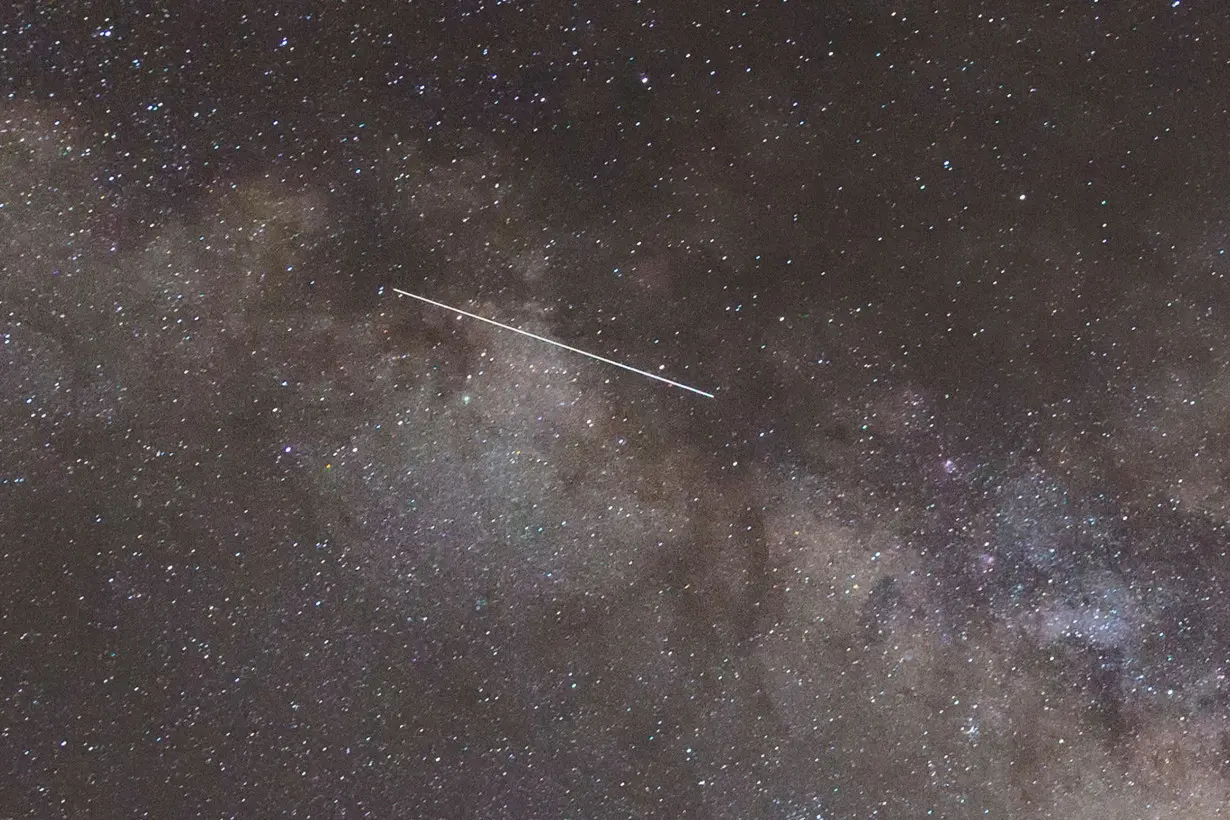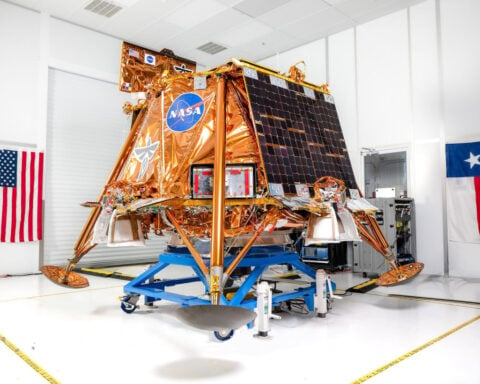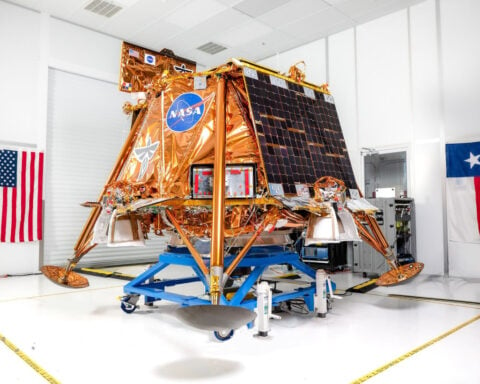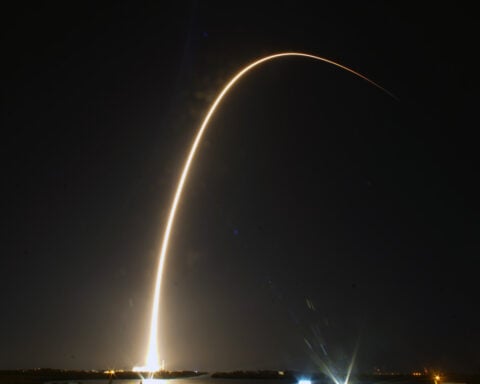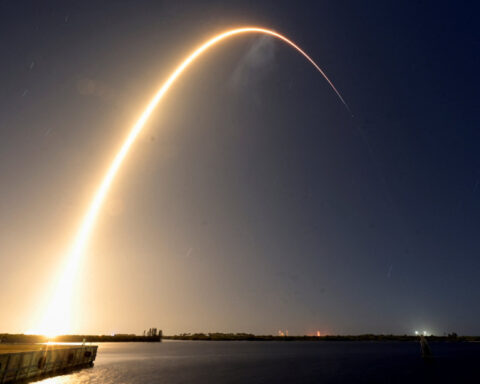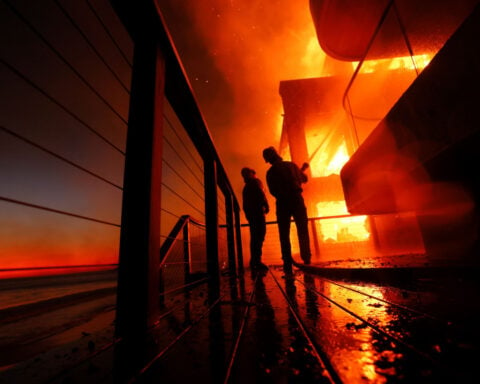(CNN) — Look up at the night sky this week for a chance to see high-speed meteors and bright fireballs from two meteor showers set to peak around the same time.
The Southern Delta Aquariids will be most active Monday night through early Tuesday and could ring in a viewing of up to 25 meteors per hour depending on your location, according to the American Meteor Society. And on Tuesday night, the minor shower Alpha Capricornids — known for its bright fireballs — could also bring five meteors per hour to the celestial party.
A fireball is defined as a meteor that is brighter than planet Venus and is caused by a larger-size meteor that could exceed 1 meter (more than 3 feet) in diameter, according to NASA.
Meteor showers are the debris left by comets and asteroids orbiting the sun that Earth encounters annually at some point during its orbital path. The debris trail for the Southern Delta Aquariids is spread out, so the shower could produce around the same rates of meteors for a few days surrounding its peak, said Robert Lunsford, the fireball report coordinator for the American Meteor Society.
Wednesday night is the best time to view both showers, Lunsford said, as the moon wanes and loses about 8% illumination each night. (The moon’s illumination can hinder the visibility of the fainter meteors.) On Monday, the moon will be about 34% full, and on Wednesday the orb will be 16% full, according to NASA’s Daily Moon Guide.
How to spot a meteor
To view meteor showers, it is best to look with your eyes only and not use any equipment such as binoculars or a telescope, as you’ll want a clear view of the entire sky, said Andrew Rivkin, a planetary astronomer and research scientist with the Applied Physics Laboratory at the Johns Hopkins University in Baltimore.
“Find yourself someplace dark, away from city lights, if you can, with a view of the open sky and settle in,” Rivkin said. He recommends sitting outside for at least 10 to 15 minutes to let your eyes adjust to the dark.
The best time to see meteors will be at around 4 a.m. local time when the radiant, the constellation from which meteor showers appear to originate, will be the highest in the sky, Lunsford said. Both meteor showers will be visible across the world, although the Northern Hemisphere may see lower rates of meteors per hour — only up to 10 — because the radiant will be lower in the sky, he added.
Constellation Aquarius is the radiant for the Southern Delta Aquariids, and constellation Capricornus is the radiant for the Alpha Capricornids. Both constellations will be next to one another in the southwest part of the sky, Lunsford said.
“Even though they’re right next to each other, you can tell them apart, because the Alpha Capricornids are so much slower,” he said. The Southern Delta Aquariids are about 40 kilometers (25 miles) per second, according to NASA, and typically last for half a second.
However, the Alpha Capricornids are usually bigger and are more likely to last at least a second long, Lunsford added. “They are not as strong as the Southern Delta Aquariids — maybe five an hour at the best — but they’re well-known for producing fireballs. So you may see in an hour four fairly faint ones and then a nice, bright one that’ll last a few seconds.”
While the Perseid meteor shower is still a few weeks out from its peak during the evening of August 11, it has also been active in the night sky since mid-July and can be seen alongside these other showers, Lunsford said. “You may only see a couple an hour, but they tend to be bright and really fast,” he said. “So if you’re starting to doze off, they’ll really wake you up.”
Earlier in July, a fireball streaked across the sky in broad daylight over parts of New York, New Jersey, Connecticut and other states in the US Northeast, sparking excitement across the East Coast. Some meteor enthusiasts captured the rare spectacle on camera.
“It is a situation where the universe is coming to us. It’s interacting with us in a way that maybe we don’t usually think about,” Rivkin said. “We see the sun every day and we see the moon. Those are up there, kind of constant, the stars are constant — but meteors are things that are not typically there. … You might be the only one to ever see a particular meteor. I think that makes them particularly special.”
Meteor showers
Here are the remaining meteor showers that are expected to peak in 2024.
Perseids: August 11-12
Draconids: October 7-8
Orionids: October 20-21
Southern Taurids: November 4-5
Northern Taurids: November 11-12
Leonids: November 17-18
Geminids: December 13-14
Ursids: December 21-22
Remaining moons of 2024
There are five more full moons this year, according to the Farmers’ Almanac.
August 19: Sturgeon moon
September 17: Harvest moon
October 17: Hunter’s moon
November 15: Beaver moon
December 15: Cold moon
The-CNN-Wire
™ & © 2024 Cable News Network, Inc., a Warner Bros. Discovery Company. All rights reserved.

 Italy, Albania, UAE sign deal for energy subsea interconnection
Italy, Albania, UAE sign deal for energy subsea interconnection
 European shares advance as bond yields ease; soft inflation powers UK stocks
European shares advance as bond yields ease; soft inflation powers UK stocks
 Bank Indonesia delivers surprise rate cut to support growth
Bank Indonesia delivers surprise rate cut to support growth
 Novak Djokovic breaks a tie with Roger Federer for the most Grand Slam matches in tennis history
Novak Djokovic breaks a tie with Roger Federer for the most Grand Slam matches in tennis history
 China's RedNote: what you need to know about the app TikTok users are flocking to
China's RedNote: what you need to know about the app TikTok users are flocking to
 British author Neil Gaiman denies ever engaging in non-consensual sex as more accusers come forward
British author Neil Gaiman denies ever engaging in non-consensual sex as more accusers come forward
